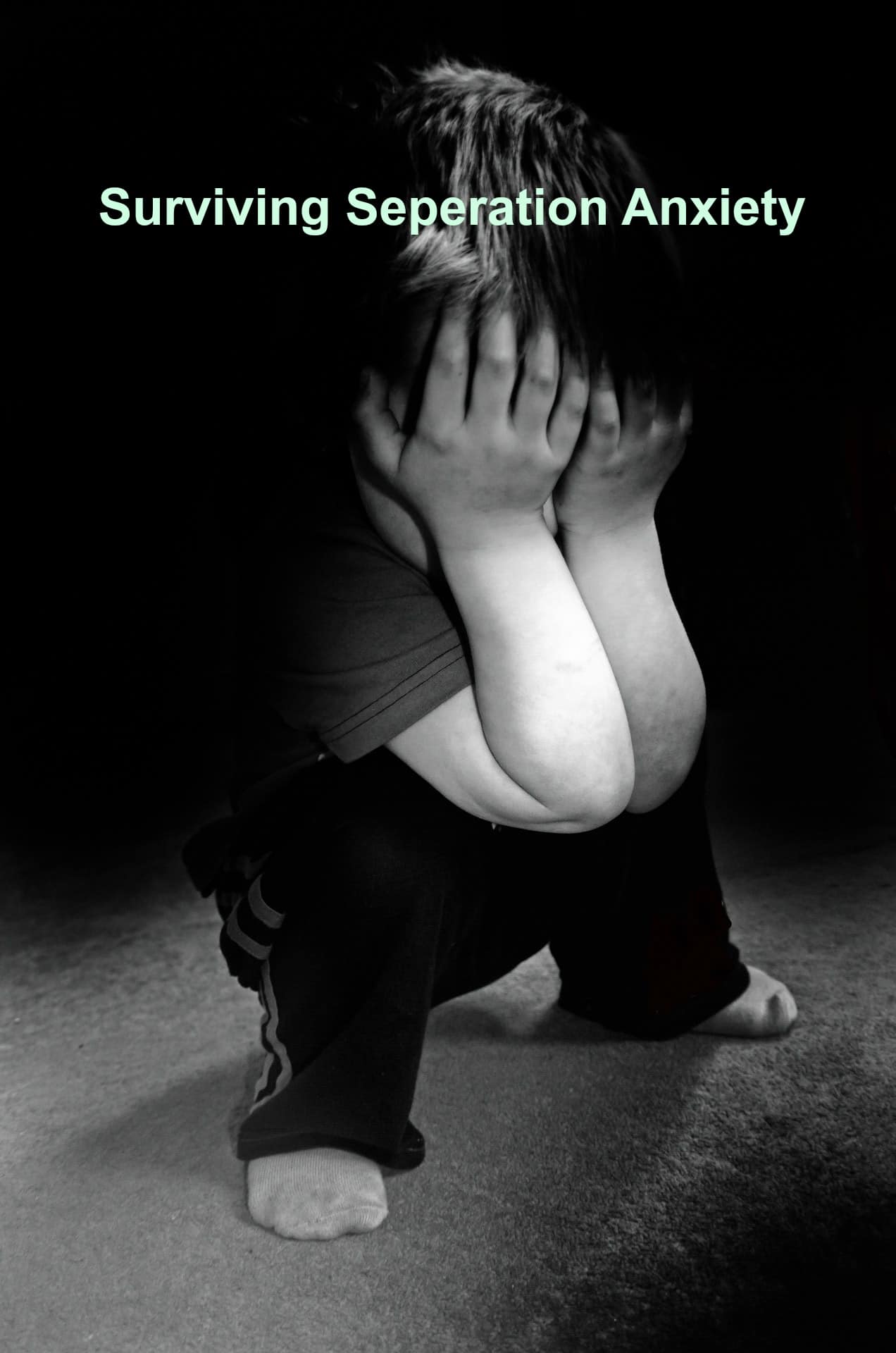I’ve recently been challenging with the not-so-uncommon concern of separation anxiety with my four-year-old. So, I am writing to share what I’ve learned from a combination of talking with seasoned moms, the internet and my attempt at referring to my self-proclaimed mommy smart brain common sense.

Some separation anxiety among children, and particularly toddlers, is considered perfectly normal. It tends to come and go, being worse on some days than others, depending on what is going on in the child’s life and his or her mysterious mind.
Young children are still learning about the world, and have not yet learned effective coping skills. Their cognitive development does not allow them to accommodate sophisticated concepts, which makes them prone to what seem to adults like irrational fears. This sort of anxious developmental stage is a normal part of growing up.
Sometimes, however, separation anxiety can present a real problem and may require some more focused coping mechanisms. Psychologists call separation anxiety that is beyond the usual clinginess Separation Anxiety Disorder (SAD). Here are some signs of normal separation anxiety, as well as some hints as to when it may need therapy or treatment.
Healthy Anxiety
This may sound like a contradiction of terms, but many experts in childhood development actually commend some separation anxiety, because it indicates a healthy attachment to the parent(s) – hey, that’s good news, right? Forming healthy attachments is considered important for an individual’s future, particularly with regard to interpersonal relationships. So a strong attachment to you, the parent, can actually be considered a good thing!
Normal separation anxiety can still be emotionally exhausting for parents and toddlers alike. Tips on how to handle separations are below.
Easing Transitions
* Build trust in your toddler. Leave him or her for short periods at first, showing that you do in fact return. Point out that he or she was perfectly safe the whole time you were gone. “I was gone for ten whole minutes! Did anything bad happen to you? Of course not!” This helps the toddler learn the brain patterns for remaining calm.
* Be consistent and firm regarding separation with your toddler. It’s easy to waffle and be uncertain, which can make your toddler even more insecure. So decide ahead of time if you’re really going to go through with it or not.
* Familiarize your toddler with his or her caretaker, teacher, babysitter, or other individual ahead of time. Try to have that person over for non-threatening interaction and let the caretaker take your toddler into another room for a few minutes at a time, then outside, and so forth.
Visit your teacher and the room the child will be in several times before leaving him or her. While you’re there, leave the toddler with the teacher for a minute or two while you run to the bathroom or some such. This helps practice the separation process.
When Anxiety May Be a Problem
Separation anxiety that is persistent can be a red flag that something is amiss. If a toddler or young child does not respond to the above strategies, and/or if separation anxiety occurs at home (seemingly without end), then it may be time to seek some help.
Toddlers – especially older toddlers – who are consistently anxious about your whereabouts, even when you are in the same house, may need some help coping. Child psychologists, in therapy sessions, work with your toddler using cognitive behavioral therapy or other methods. This can help your little one learn how to handle being left in the care of someone you know is safe.
An incredibly valuable parenting resource is Positive Parenting Solutions**. Parent Educator, Amy McCready offers free webinars and sound, positive parenting advice.
Another resource I have bookmarked myself, in the event I need additional guidance in the future, is this course: Turnaround Anxiety. I’ve not needed extreme measure yet but upon researching while at the stage we’re at now, this is definitely one I will look into based on the positive reviews and recommendations I’ve read.
Leave a Reply